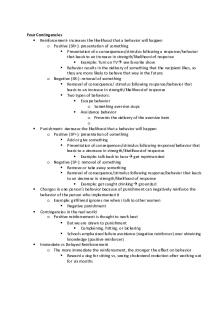Kleobis and Biton - with notes PDF

| Title | Kleobis and Biton - with notes |
|---|---|
| Course | Art in the Ancient World |
| Institution | University of Bristol |
| Pages | 1 |
| File Size | 128.2 KB |
| File Type | |
| Total Downloads | 67 |
| Total Views | 142 |
Summary
Tutorial work for Archaic Sculpture....
Description
Free Standing Sculpture Name:
“Kleobis and Biton”
Date:
c. 580 BC
Pose:
kouroi
Material Used:
stone
Original / Roman Copy? Original Notes / Discussion Subject: Two young men who distinguished themselves before death (as told by Herodotus 1.31); they send a message out to those visiting the sanctuary of what it means to be Argive. When their chariot breaks down, the boys harness themselves to it in order to take their mother the longish distance to the temple. Once there, grateful to them for their efforts, she prays, as they lie sleeping off their strenuous efforts. She prays that the gods grant her boys the boon of dying happy. She goes out to find them both dead. This they die at the height of their fame without suffering subsequent misfortune. Pose: traditional early Archaic kouros (“sentry box”) pose; straight-forward frontal pose (with quadrifacial frontality); rigid, arms held parallel to sides, head facing forwards, left leg slightly advanced. The eyes, knees, shoulders hands etc. are all level (horizontal); the arms are slightly bent (as they are pulling cart?) Proportion: more stocky than NYK; large biceps and thighs; oversized heads
Pattern: as NYK they are symmetrical through vertical axis; anatomical depiction often has an unnatural, geometrical nature – the lower thorax is a parabola and the inguinal ridge unnaturally straight, but this time they is not an enforced mirroring through the navel. Note the balance of the three braids of hair either side of the head.
Anatomy: as said above, robust; less square than the NYK; the lips appear to be stuck on rather than organic to the face; note that the rib cage is delineated merely by a carved groove.
Emotion: there is a first sense of the “Archaic smile”, designed to enliven the face and make it seem alive; here is it appropriate due to the pride of the young men.
Conclusions / Other: (impressions; is it successful? What developments have been made? etc.) Slight move towards naturalism and away from finding unrealistic symmetry in the human form. Their powerful, ox-like images at Delphi were undoubtedly intended to embody this blissful fate and are, in a way, images of wish-fulfillment... which transcend the imperfect world of everyday experience and are unaffected by its travails. The ‘archaic smile’ which characterizes many of the kouroi is not so much an emotion as a symbol, for they are beyond emotion in the ordinary sense of the word” (Pollit, 6-7, 9)....
Similar Free PDFs

Kleobis and Biton - with notes
- 1 Pages

Chapter-18-with notes
- 59 Pages

Date With Death - notes
- 14 Pages

Anavyssos Kouros - with notes
- 1 Pages

Cybersecurity-Fundamentals With Notes
- 200 Pages

Notes for Accounting with Xero
- 4 Pages

EE106 - Course Notes with Problems
- 148 Pages

BUS201 Exam Notes with examples
- 11 Pages

All lecture notes with drawings
- 63 Pages
Popular Institutions
- Tinajero National High School - Annex
- Politeknik Caltex Riau
- Yokohama City University
- SGT University
- University of Al-Qadisiyah
- Divine Word College of Vigan
- Techniek College Rotterdam
- Universidade de Santiago
- Universiti Teknologi MARA Cawangan Johor Kampus Pasir Gudang
- Poltekkes Kemenkes Yogyakarta
- Baguio City National High School
- Colegio san marcos
- preparatoria uno
- Centro de Bachillerato Tecnológico Industrial y de Servicios No. 107
- Dalian Maritime University
- Quang Trung Secondary School
- Colegio Tecnológico en Informática
- Corporación Regional de Educación Superior
- Grupo CEDVA
- Dar Al Uloom University
- Centro de Estudios Preuniversitarios de la Universidad Nacional de Ingeniería
- 上智大学
- Aakash International School, Nuna Majara
- San Felipe Neri Catholic School
- Kang Chiao International School - New Taipei City
- Misamis Occidental National High School
- Institución Educativa Escuela Normal Juan Ladrilleros
- Kolehiyo ng Pantukan
- Batanes State College
- Instituto Continental
- Sekolah Menengah Kejuruan Kesehatan Kaltara (Tarakan)
- Colegio de La Inmaculada Concepcion - Cebu






